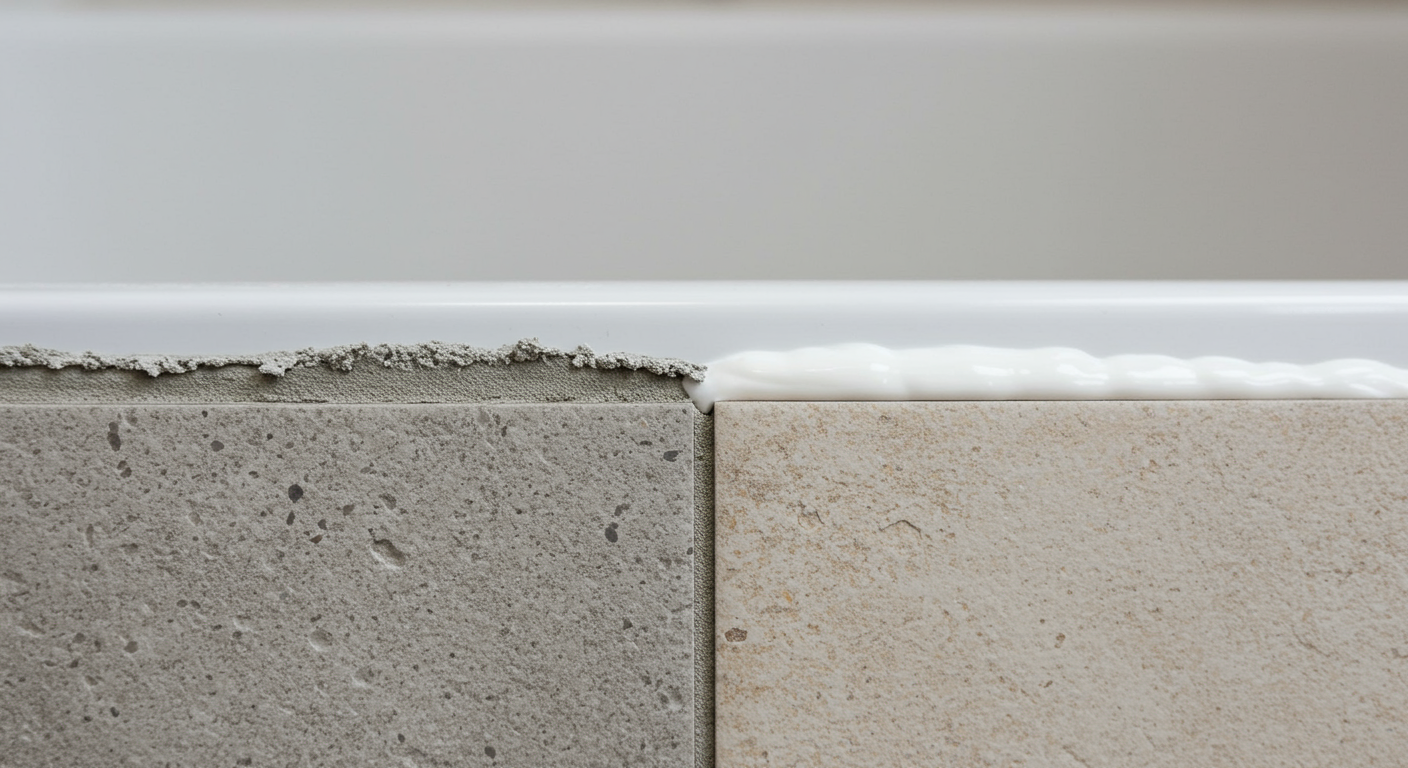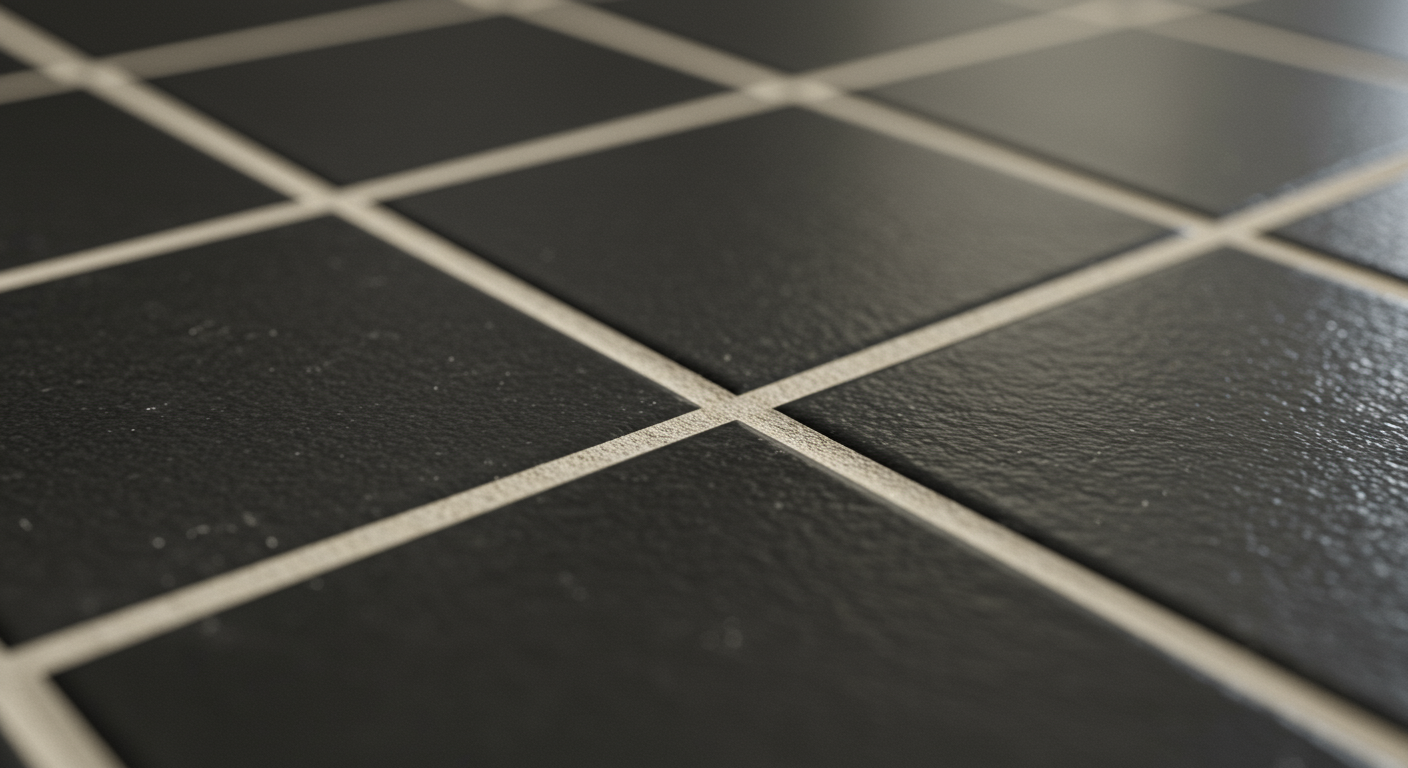
When you tackle a bathroom remodel—or even routine bathroom upkeep—you’ll run into two essentials: grout and caulk. They get mixed up a lot, but knowing the difference is what keeps your bathroom dry, clean, and looking sharp. Use the wrong product in the wrong spot and you invite water damage, mold, and a finish that fails before its time.
This guide clears up the grout vs. caulk question in a bathroom setting. You’ll see what each product does, where each belongs, and how to maintain them so your bathroom stays watertight and worry‑free. Let’s dive in.
What is Grout?

Grout is a cement‑based mix (sometimes with sand, polymers, or epoxy) that fills the joints between bathroom tile. Its main job is to lock the tile field together, keep spacing uniform, and help prevent dirt from settling into gaps. In other words, grout adds rigidity and a finished look to tile work throughout the bathroom.
Typical Grout Applications:
Filling narrow joints between tiles on walls and floors in your bathroom.
Areas that stay mostly static and don’t move as the house shifts.
Shower walls and floors where tile meets tile across a single plane.
Around a tub only if the tub is set rock‑solid and movement is minimal (though many pros still favor caulk at this joint).
Grout is inherently rigid—great for structure, not great anywhere movement happens. That’s why you’ll often see cracking in corners or where planes meet if grout is used where flexibility is required in a bathroom.
What is Caulk?

Caulk (sealant) is flexible and waterproof. It’s made to stretch and compress, so it can handle expansion, contraction, and daily use in a busy bathroom. High‑quality 100% silicone bathroom caulk is the go‑to for wet areas because it resists water and stays flexible longer than most alternatives.
Typical Caulk Applications:
Sealing caulk bathroom joints between dissimilar materials (e.g., tile and drywall, tub and tile).
Caulk expansion joints, caulk corners bathroom, and other areas where movement is expected.
Creating a watertight seal around fixtures like caulk around tub, sinks, and toilet bases.
Caulk shower enclosures where the shower pan meets the tile, or where glass panels meet walls.
Caulk floor to wall transitions, especially where the floor tiles meet the baseboards or a different wall material (caulk change planes).
The flexibility of caulk is paramount for preventing water penetration in critical areas, protecting your home from potential water damage and mold.
Grout vs Caulk: The Key Differences
Understanding the fundamental difference between grout and caulk boils down to flexibility and purpose:
Flexibility: Grout is rigid and provides structural integrity between tiles. Caulk is flexible and accommodates movement. This is the main distinction in the grout or caulk bathroom decision.
Application: Grout is primarily for filling gaps between tiles on a single plane. Caulk is for sealing gaps between different surfaces, materials, or at corners and changes in plane. Think shower grout vs caulk – grout for tile-to-tile on the wall, caulk for where the wall meets the shower pan or the glass enclosure.
Waterproofing: While grout helps prevent water from seeping through, it is porous and often requires sealing. Caulk, especially silicone, provides a superior, flexible, and fully watertight seal.
When to Use Which: Practical Applications
Making the right choice between grout and caulk bathroom scenarios is straightforward once you know the rules:
When to use grout: Use grout for all bathroom tile grout lines where one tile meets another tile on a flat surface, such as the main field of your shower walls or bathroom floor. Proper grouting bathroom ensures the tiles are firmly set and creates a clean, finished look.
When to use caulk: Use caulk for any joint that could experience movement or where a superior watertight seal is critical. This includes: the joint where your bathroom tile meets the tub (tub grout vs caulk is almost always caulk for the tub-to-tile joint), where a shower pan meets the wall, where a countertop meets a backsplash, around the base of a toilet, and in all caulk corners bathroom (where two walls meet, or a wall meets the floor). Any grout change planes should ideally be a caulk change planes for flexibility and waterproofing.
For a seamless and professional finish in your bathroom remodel or bathroom renovation, always use grout application bathroom for tile gaps and caulk application bathroom for transitions and corners.
Maintenance and Longevity
Both materials need periodic attention in a bathroom. Over time, water, cleaners, and movement can lead to discoloration, cracking, or mold.
Grout maintenance: Clean regularly with a pH‑neutral cleaner. Reseal cement‑based grout as needed to resist stains. If grout cracks, crumbles, or stains deeply, remove the problem sections and regrout to restore integrity and appearance.
Caulk maintenance: Inspect caulk lines for peeling, gaps, or mold. Remove all of the old caulk completely, clean and dry the area, and apply a fresh bead of bathroom‑grade silicone if the seal is compromised. Recaulking on time prevents water intrusion behind tile.
Proper grout maintenance bathroom and caulk maintenance bathroom are key to preserving your bathroom tile work and preventing significant issues down the line.
Conclusion
Grout and caulk do different jobs, and a durable bathroom depends on using each where it belongs. Grout provides structure and a finished look for tile‑to‑tile joints. Caulk delivers the flexible, watertight seals you need at corners, changes in plane, and where materials meet. Choose the right product for each joint and you’ll get a bathroom that stays beautiful, tight, and trouble‑free.
Remember the rule of thumb for any bathroom project: grout the static tile joints; caulk the flexible transitions and fixture edges. Your bathroom will thank you.


